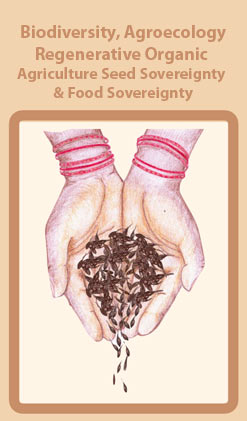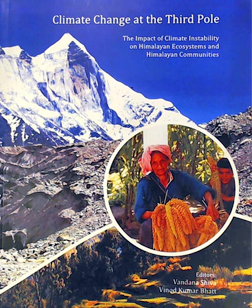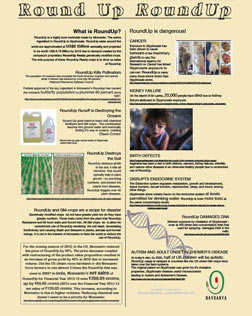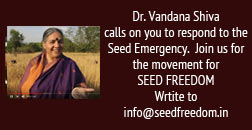Northern India was hit by extreme cloudbursts in the monsoon this year and the area around the Tehri Dam was reported to be especially affected. During a documentation trip in mid-october Navdanya collected peoples accounts. 50 % of the houses were damaged. Landslides have severely affected infrastructure and fields and crops have been washed away. “It’s a disturbance in nature” said 74-years old Sri Mahinder Singh, who was born in Tehri district. He never before witnessed a rain as heavy as this.
At the shore of the reservoir people were flooded from below and above simultaneously. Fields and homes by the dam shore were submerged as the water level rose from 820 to 835 meters. The Tehri hydro power plant authorities did not want to release excess water from the dam, even though the water levels were affecting the surrounding villages. From their point of view release through the slush gates is spillage.
“This used to be such a great place with great farms, the dam builders have turned us all into beggars”, says Mooni Devi, who lives at water level. Not only has the flooding affected houses, farmland and infrastructure, it has affected peoples sense of being at risk, of their homes no
longer being safe places, of their valley no longer being a safe place, of rain no longer being a blessing.
Purba Devi in Kuroli says that farming is important because, “if you don’t do it, what would you eat?” The way the women value their farming work, demonstrates their wisdom of the deep inter-connectedness between human lives and the land, water, plants and animals. We need food and they know how to grow it. In the Tehri area people face a crisis imposed by climate change and dam building. It can turn into a food-crisis, although they are the true experts of food production. Yet the knowledge they shared with us, and the reality of their life as farmers, is what gives rise to hope in the midst of this destruction we saw.


















